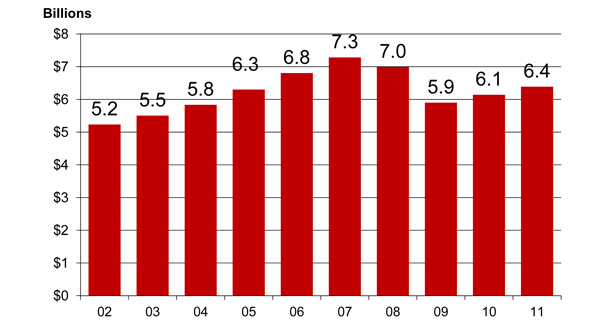The OAAA’s ‘Take Another Look’ initiative outlined the need to rethink process and expand technology applications. Many agree the lack of standards is holding the industry back, and both buyers and sellers have said they see the value in a common way of distributing RFPs and collecting proposal information. The industry has spoken, and once again we have listened and acted.
To build upon the release of DOmedia’s new RFP 2.0 features, I would like to share some the most common opportunities we observe in the RFP process:
Opportunities for Sellers to Help Buyers
- Use the Buyer’s Template
Many sellers have a proposal tool, which generates an Excel spreadsheet, or PDF that presents information in the way sellers want to sell. The tricky part is when the buyers send out a template, they are trying to guide the way they want to review your proposal. If sellers submit proposals in their own format, it creates more work for the buyers to convert them into a consistent format they can use. Some buyers don’t mind taking the time to convert your proposal information into their template, but for others it’s a hurdle, which can have a negative result for the seller. The buyers do want to understand what sets you apart so they don’t ignore additional information you provide; they just prefer it in their format. - Understanding “Unit #” Versus “# of Units”
This is a simple issue to look out for and getting it right lets the buyer know if the seller is paying attention to their request. “Unit #” is the inventory number or panel id, whereas “# of Units” lets the buyer know if the proposal has multiple faces or is part of a package. - Provide Impression Measures
There are many times when sellers leave impressions blank or put “N/A” in the column. This puts the buyers in a difficult position. We know there is no apples-to-apples comparison of different media formats because each opportunity is unique, but it is important to try to quantify who is being exposed to the ad. Another issue with impressions is when the seller gives with wrong time unit (weekly versus monthly). This affects the buyer’s calculations. Finally, another hiccup that buyers encounter is when the impressions number is not formatted correctly (i.e. 50MM or 000’s) – be sure to pay attention to the format requested by the buyer. - If You Can’t Offer a Proposal, Be Sure to Decline an RFP Properly
A buyer includes sellers in the RFP that they think can best cover the client’s needs for that campaign. Sometimes an included seller is unable to submit a proposal. The great thing about the DOmedia RFP tool is that both sides can learn over time what is the cause of seller declining. The seller should clearly define why they are unable to submit (i.e., don’t offer that format, no coverage in that area, no more inventory). This allows the buyers to continue to include the right sellers in the future and also provides insight to profile update requirements.
Opportunities for Buyers to Help Sellers
- Use an RFP Template Consistently
The majority of RFPs have a set of “questions” that need to be answered. However, if the buyer is rushed or sending a simple request, they sometimes elect not to include a template, thereby possibly resulting in incomplete information being given to the seller. This may result in additional communication (and time) between the buyer and seller to fully understand the client needs. DOmedia solved this issue by having a standard brief and “set of questions” (RFP template in 2.0) that are always asked for every RFP. This template can be added to by the buyer; thus allowing flexibility for the buyers while giving the sellers a consistent experience. - Request Rate Card Rates
Capturing rate card pricing seems like a simple thing that is often overlooked. However, when the client wants any kind of reporting on actual vs. rate card costs, it is crucial to have captured this information. It is very time consuming for the seller to backtrack and get rate card pricing after a campaign ended. - Be Clear in the RFP Brief
We know that buyers do not intentionally withhold information about a potential campaign from vendors. A common issue we have observed is missing information from briefs – often as a result of a hurried process. DOmedia’s Project Brief form helps the buyer think through the campaign information in a structured way. Both sides benefit from always having campaign details listed in the same location.
Using these “tips” along with DOmedia’s RFP 2.0 application allows buyers and sellers to work faster, smarter and better on behalf of advertising clients. Information can be shared more efficiently thereby freeing up time for both the buyers and sellers to focus on more value added and strategic conversations. All of this helps the industry move forward and reach the objectives set with OAAA’s “Take Another Look” initiative.






